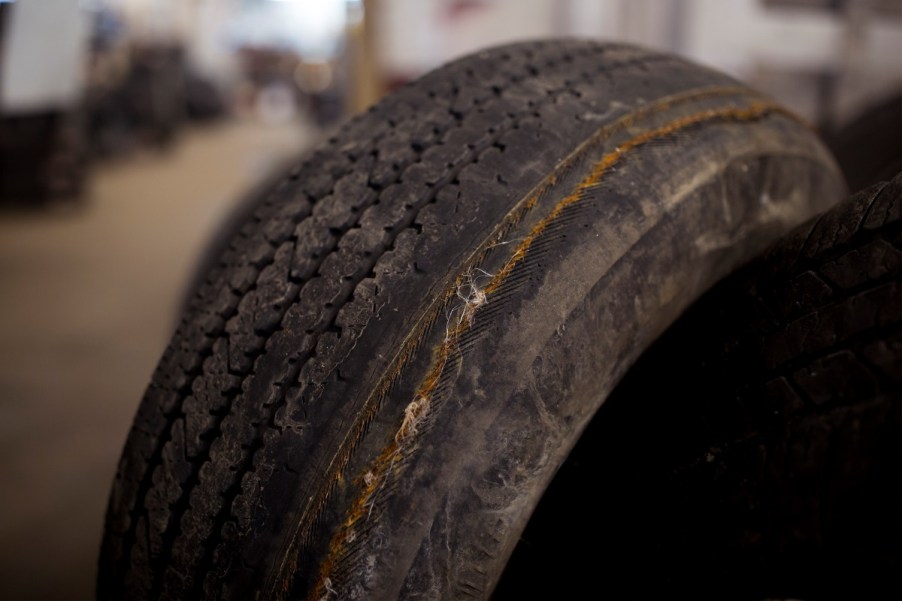
Your Tires Can Tell You a Lot About Your Suspension Problems
The old saying goes, “tires are the only part of your car that touches the road”. And that simple fact means they are there for more than simply getting power to the ground. Of course, your tires respond to imperfections in the road. But more importantly, your tires can tell you about problems in your steering and with your car’s suspension system.
Tires do more than move you down the road
Let me paint a word picture. You’re driving along, and you notice that your steering wheel is off-center even though you’re driving on a straight road. Or you notice a vibration that feels abnormal. Or it’s harder to turn in one direction than the other. All of these car problems are suspension and steering-related. But before you run to the shop, you can better understand what is happening by looking at your tires.
Tire wear on the inside shoulder can point to big car suspension problems
If you take the tires off of your vehicle and notice extreme wear on the inside shoulder, you have excessive toe issues. These are most likely the result of a worn ball joint or tie rod as the tires are misaligned. Excessive toe-out means that the inside shoulder is scrubbing the road, as the tire points away from the centerline of the vehicle. Not only does this mean your steering wheel is off-center, but it costs fuel economy as well.
Because the tire is scrubbing the road rather than rolling straight, there is more resistance and your car will be less efficient.
If both front tires show excessive inside shoulder wear, it could be a sign that your shocks need replacing. Because they no longer hold the car at the proper ride height, both front tires toe out with some negative camber as well. This combination leads to rapid wear of the inside shoulders of both front tires.
Choppy or wavy tire wear points to worn shocks

If your tires look wavy or choppy, it’s a sign of extremely worn shocks. Dampers don’t just absorb bumps, but they should hold your tires to the road consistently. A worn shock will let the tires bounce off of the road surface too much. This leads to choppy tire wear, called cupping, and it’s a sure sign that it’s time for some new parts.
Flat spots and diagonal tire wear are a sign of unbalanced wheels
Like any rotating object, your wheels and tires need to be balanced to rotate evenly. This is typically part of the installation process, but it isn’t always an exact science. Natural imperfections in both wheel and tire manufacturing mean that added wheel weights are required to balance each wheel individually.
However, an inexperienced shop mechanic can apply too many or too few wheel weights, or install them in the incorrect location. In addition, wheel weights can fall off for a variety of reasons, causing an unbalanced wheel.
When this happens, the heavier part of the wheel will cause more extreme wear on the corresponding area of the tire. In essence, the unbalanced wheel wants to spin in an ovular shape, rather than a perfect circle. The heavier section will put more stress on one area of the tire, causing a flat spot. You’ll typically feel this as a steady vibration that doesn’t go away no matter what speed you’re traveling.
When in doubt, visit a mechanic to diagnose your car’s suspension problems

Looking at your tires can help you diagnose suspension problems for you DIY mechanics out there. But if you still aren’t sure what your car needs to restore proper handling and ride quality, it’s best to let a professional handle the job instead. Either way, use these tips to understand what your car is doing and always keep an eye on tire wear to ensure you can drive safely in all road conditions.




